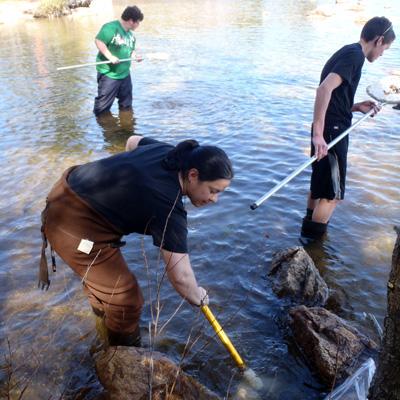Validating Landscape Models for Mercury in Northeast Lakes Using Dragonfly Nymphs as Mercury Bio-Sentinels

Mercury is a toxic pollutant, widespread in northeastern U.S. ecosystems. Resource managers’ efforts to develop fish consumption advisories for humans and to focus conservation efforts for fish-eating wildlife are hampered by significant variability in fish mercury concentrations from site to site, often in neighboring lakes. Although scientists have created mercury hotspot maps, showing lakes sensitive to mercury, we still lack studies that use a bio-sentinel to predict mercury levels. Fish mercury concentrations are most often used as biological indicators of mercury sensitivity in lakes. However, fish may move between water bodies, and mercury prediction can be confounded by fish size, species, diet, gender, and age.
NSRC researchers sampled lake water and a potential bio-sentinel, dragonfly larvae (or nymphs), in 74 lakes across New England and New York that are part of the U.S. EPA long-term monitoring. Researchers determined the efficacy of dragonflies as bio-sentinels in predicting sensitivity to mercury across the region. They used dragonflies because they are widespread in freshwaters, long-lived (1-5 years or more), spend the aquatic portion of their life in just one water body, are carnivorous, and contain relatively high mercury concentrations, mostly as methylmercury, a more potent form transformed by micro-organisms in aquatic systems.
Researchers confirmed that mercury in dragonfly larvae was mostly in the methyl form (88%), supporting their use as bio-sentinels. However, there was not a strong link between dragonfly mercury and water mercury. Dragonfly data should be evaluated statistically against fish mercury concentrations to assess dragonfly use as a less destructive bio-sentinel suited for refining fish advisories. Read more in UMaine Today and The Adirondack Almanack.
